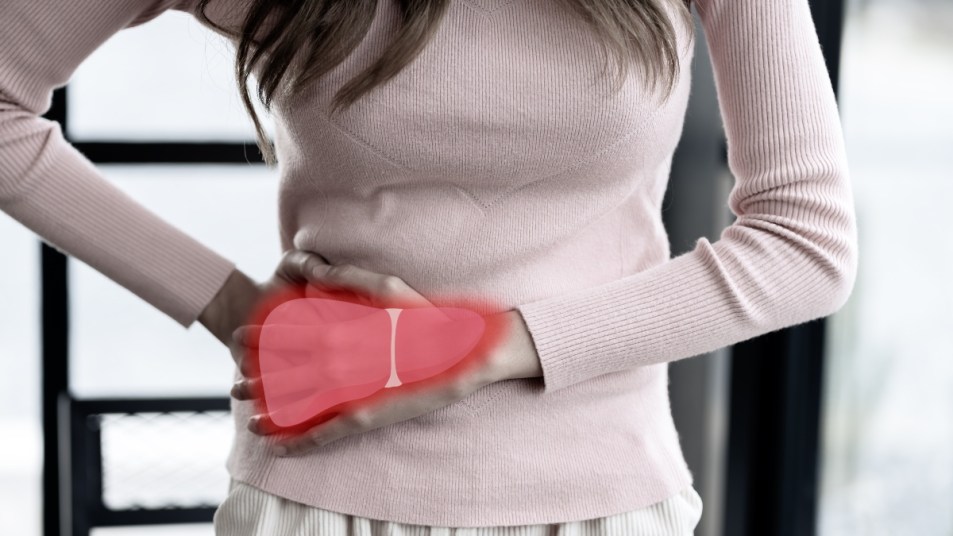3 Science-Backed Ways To Prevent the Damaging Effects of Non-Alcoholic Fatty Liver Disease
Simple routines with big benefits.

Many people suffer from fatty liver — and the tiredness, brain fog, and weight gain that come with it. But did you know that postmenopausal women may be at an especially high risk for developing the condition? Keeping a healthy diet and a regular exercise routine may aid in keeping it at bay, but there’s more you can do to boost your health and prevent fatty liver disease. Here are three researched-backed ways to to ease symptoms and reverse damage.
What is fatty liver disease?
Most energy sappers, from chores to stress, are plain to see, but there’s an invisible reason women over 50 are drained: nonalcoholic fatty liver disease (NAFLD), a condition caused by fat buildup in the organ. “The liver is a security gate, filtering toxins. But when it’s overwhelmed by fat, it can’t catch them all, so they accumulate, causing fatigue,” says dietitian Kristin Kirkpatrick, author of Skinny Liver (Buy from Amazon, $15.99). And as we age, we’re more susceptible, adds Catherine Lucero, MD, a hepatologist at New York-Presbyterian/Weill Cornell Medical Center. “The loss of estrogen in menopause leads to visceral fat, increasing the risk of fatty liver.”
Another culprit? Diet, says cardiologist William Davis, MD, author of Super Gut (Buy from Amazon, $17.49). “Fatty liver is exploding due to our high intake of sugar and carbs. The liver converts them into triglycerides that move into the bloodstream. If we have too many triglycerides, some get stuck in the liver, clogging it with fat.”
What should I do if I have fatty liver disease?
Good news: It can be reversed! Incorporate some of these research-backed “bests” into your daily routine to feel better fast.
Best Habit: Lights Out Early
Resisting the temptation to stay up late watching TV and instead keeping a regular bedtime may help prevent NAFLD, per a 2022 study. The researchers found that going to bed too late, napping for a long time during the day, and sleep disturbances like snoring are all associated with higher NAFLD risk. In fact, skimping on Zzz’s triggers a chain reaction that can lead to liver problems, says Dr. Davis. “Sleep deprivation contributes to the loss of healthy gut hormones, including melatonin.” Why that matters: “Melatonin plays a major role in the permeability of the intestine; without it, bad microbes can enter the liver and contribute to NAFLD,” he explains. The good news is that making a habit of hitting the hay earlier can reduce your risk. Bonus: Clocking more sleep also lessens the risk of diabetes and heart disease, and may even lead to thicker hair since melatonin could stimulate hair growth.
Best Sip: Coffee
Your morning cup of joe doesn’t just perk you up; it also invigorates your liver. A study in the journal Nutrients linked regular coffee consumption with a lower risk of NAFLD. Dr. Lucero explains, “the antioxidants in coffee reduce fat and inflammation in the liver.” Kirkpatrick adds: Not only does java slow the progression of fatty liver, it also may reduce the risk of cirrhosis, the most concerning stage of the disease — “even small amounts of coffee are beneficial.” Bonus: A Harvard study found that people who drank coffee daily (without cream and sugar) lost fat, thanks to the brew’s ability to increase metabolism.
Best Supplement: Choline
A groundbreaking study in The American Journal of Clinical Nutrition found that postmenopausal women who lacked sufficient levels of choline were at higher risk for developing NAFLD. That’s because the nutrient helps break down fat to prevent it from accumulating in the liver. To get the benefits, supplement daily with 425 milligrams of choline. Prefer getting your nutrients from food? Consider choline-rich foods like eggs, fish, and Shiitake mushrooms. Bonus: Animal studies suggest that choline may help protect memory during aging.
This content is not a substitute for professional medical advice or diagnosis. Always consult your physician before pursuing any treatment plan.
This article originally appeared in our print magazine, First For Women.
















